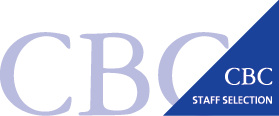
Unlocking greater productivity from your team
Fixing Australia’s lagging productivity has been a hot topic recently, with the Reserve Bank of Australia, ANZ, and the Australian Chamber signalling that improvements are necessary. Productivity concerns can be closely aligned with national issues, such as reducing inflation or staying competitive in the global market. But business owners should not ignore its impact closer to home.
According to the Australian Industry Group and 320 senior leaders, improving productivity and efficiencies is the key to success for small and large businesses this year. With ongoing shortages of skilled labour and tightening market conditions, businesses are being encouraged to explore productivity measures to survive the uncertain conditions.
Productivity is about working smarter, not harder, and businesses can pull many levers. Director Sally Mlikota and Recruitment Manager Virginia Sharpe share their insights into where managers can find the hidden potential already within their business.
Recruiting people with purpose
People are likely to be a business’ biggest investment. Therefore, the first step is usually to examine closely how new employees are selected, onboarded, and then embedded into the business. The challenge is that when it comes to recruitment, there is often no exact measure on which to base a decision.
“Certain job functions are highly trackable when it comes to productivity. These are often administrative, data entry, or even accounting and finance roles. For these roles, testing their accuracy, typing, and software knowledge is a great indicator for employers. However, they are the exception. Most roles require a little more digging, experience, and gut instinct to help you understand a candidate’s drive.
DISC assessments, for example, help us understand a candidate’s behavioural traits. This provides insights into not only what motivates them, but also how they solve problems, how they work, and how best a manager can communicate with them. You also have to consider the team they will be joining to assess whether their personality is an excellent fit for both parties,” says Sally.
However, once an ideal candidate has been found, the work certainly isn’t over. Virginia adds,
“Employers often relax once they have chosen a new candidate, but that’s just the beginning. I’ve discovered that making sure a new hire fully understands their role and performance expectations from the start helps them be more productive. To do this, the employer should spend time and resources ensuring the job descriptions accurately reflect the business needs. Additionally, planning an onboarding process that helps the new employee understand and contribute to the business is crucial.”
On the other end of the spectrum, complacency within a team can also be detrimental to productivity. Even minor issues like being consistently late or taking breaks to check social media can become accepted habits, leading to a significant loss of work hours. The problem here is that these ‘innocent’ issues often seem silly to highlight, so they can easily go unchecked. However, when you multiply 10 or 20 minutes per employee per day, the lost work hours can be the make or break of a business’s bottom line.”
Culture is king
Company culture can be a secret weapon for unlocking value within a business. However, there is no one-size-fits-all solution. Every employee, manager, and business is different. As previously mentioned, it’s crucial to ensure that recruitment finds the perfect fit for what your business can offer, but there are other elements that can also improve or destroy employee engagement and productivity.
“No matter how good your business is, a micromanager can lead to a disengaged and discontented team, often impeding productivity and squashing initiative. Whether it’s through fear, poor training or, lack of understanding of their role; the best thing a business owner can do is to retrain a micromanager to be able to delegate.
Delegating tasks or responsibilities not only provides education and growth opportunities for the team, but also allows managers to focus on more strategic priorities. The beauty is that both the manager and team members are empowered,” states Sally.
While some drivers for productivity are universal, others can be more conditional, depending on the person.
“Creating a work environment that celebrates and acknowledges excellent performance is crucial for fostering employee engagement and driving alignment with company KPIs. It’s important to recognise that not all employees respond the same way to rewards, so tailoring incentives to individuals can lead to better results.
Similarly, acknowledging that not every employee thrives in the same work environment, whether remote or in an office, allows businesses to adapt and support their diverse workforce, ultimately leading to the best outcomes for all,” explains Virginia.
The right tools for the job
Often, businesses look to technology to solve their productivity woes. However, as pioneering AI tools continue to evolve, they are reportedly adding stress to employees.
“Investment in hardware or software can send productivity up or down. With that in mind, businesses really need to evaluate whether a tool is fit for purpose. To do that sufficiently, it’s vital that the right people are involved, and a clear scope of requirements is defined in order to make that evaluation.
In contrast, what we’re seeing with AI is that these assessments are being made in silos and subsequently, adding hours, if not days, to the workload without improving productivity. Naturally, the right piece of software or AI tool will do the opposite, but businesses really need a process for researching, evaluating and implementing innovation to save them from wasting time, money and resources” closes Sally.
